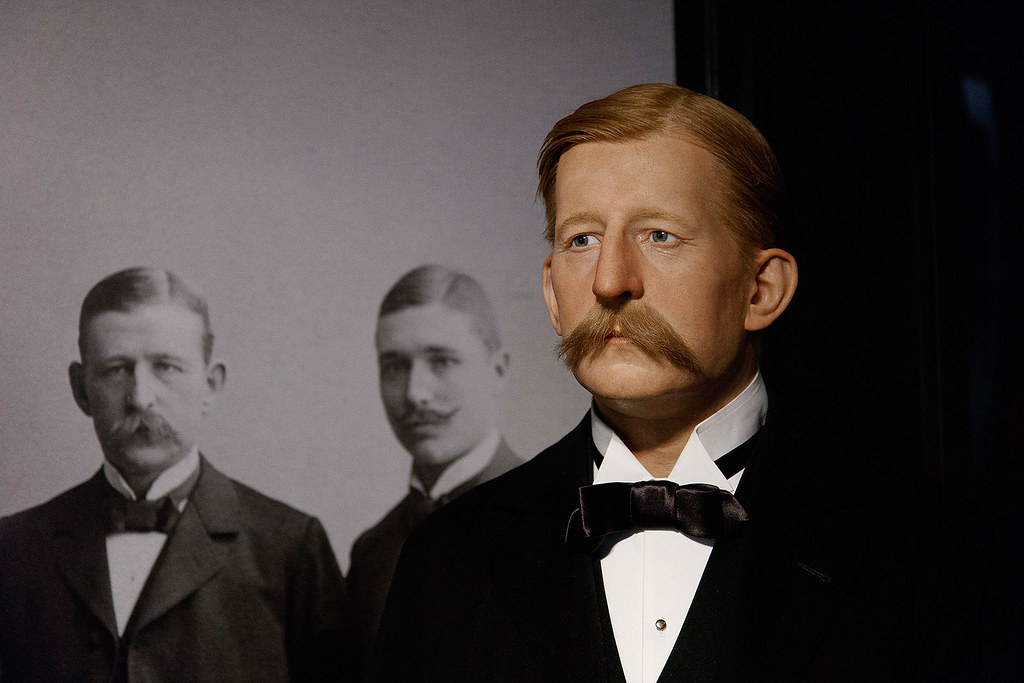Swedish engineer, balloon pilot and Arctic explorer: Who is Salomon August Andree?
(1854-1897) Swedish explorer and engineer. He started the aerial exploration of the poles by trying the first flight to the North Pole by balloon.

He was born on October 18, 1854, in Granna. After completing his engineering studies at the Royal Institute of Technology in Stockholm in 1873, he began working in an industrial establishment, becoming an adjunct professor at a technical school in 1880. He spent the winter of 1882-1883 at the Swedish observatory in the Spitzberg Archipelago. He participated in the atmospheric electricity research carried out within the framework of the program. He then took a job at the Swedish Patent Office. In the summer of 1897, the frozen corpses of Andree and two of his friends, who went on a polar voyage in a balloon that he had dreamed of for a long time, were found 33 years after they took off, on Kvitoya Island (White Island) in the Arctic region.
Salomon August Andrée (18 October 1854, in Gränna, Småland – October 1897, in Kvitøya, Arctic Norway), during his lifetime most often known as S. A. Andrée, was a Swedish engineer, physicist, aeronaut and polar explorer who died while leading an attempt to reach the Geographic North Pole by hydrogen balloon. The balloon expedition was unsuccessful in reaching the Pole and resulted in the deaths of all three of its participants.
August Andree's interest in ballooning coincided with 1876 when he stayed in the USA for a few months. Andree, who got information by meeting the American balloonist John Wise, who broke the long-distance flight record in a balloon, in Philadelphia, had made up his mind to reach the North Pole by balloon after the winter months he spent in Spitzberg. However, he had to wait for a long time to realize this great wish, for the first time in 1893, he made nine flight attempts with a French-made balloon, and as soon as he received the flight approval from the Swedish Academy of Sciences in 1895, he started the preparations for the journey. The atlas balloon named Oernen (Eagle), which he had made by a Parisian master, was filled with hydrogen, and with a volume of 4,814 m, it was one of the largest balloons ever made. Andree had to postpone his first polar voyage in the summer of 1896 due to insufficient wind. Finally, on July 11, 1897, he and his two friends, Nils Strindberg and Knut Fraenkel took off from the island of Spitzberg in the Svalbard Archipelago to the northeast. However, no one returned from this last balloon journey of the 19th century.
In 1930, a Norwegian research vessel found the campsite and frozen corpses of Andree and his friends on Kvitoya Island, near 81° north latitude. This was further from the pole than where they had set off. According to the diary of Andree, who was at the campsite, the balloon that was dragged into nature fell 65 hours after its take-off, and the explorers stayed here to return. For a long time, it was not explained why they died, despite having enough food and fuel with them. In 1952, a Danish doctor suggested that they died of a febrile illness caused by the trichine in the swarm of a polar bear they ate. Although it did not achieve its purpose, this experiment is important as a starting point in the aerial exploration of the poles.
